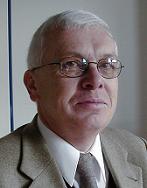Keynote Speakers
Jean-Dominique Decotignie CSEM, Switzerland

The Real-Time and Wireless Sensor Networks: are they Compatible?
Abstract
Networking at the sensory level is now very common. Fieldbuses like CAN, FIP or Profibus have been around for more than three decades. Establishing their real-time properties and guarantees has been the subject of a number of papers in scientific conferences. Using wireless transmission at the sensory level is very attractive. It has been employed for years to link mobile robots or automated guided vehicles to control and supervision computers. The first attempts to wirelessly connect sensors with temporal constraints date from the early 1990s. Since then, the subject, under the name of real-time wireless sensor networks, has generated a large body of research and development. A number of researchers have reused protocols and algorithms designed for wireline networks or made assumptions that ease the design and the analysis. As a result, in many cases, real-time analysis is based on assumptions that are quite far from reality leading to purely academic solutions.
The first part of the talk will show a few examples of WSN deployments done by CSEM on glaciers, buildings, trains or planes and explain the main lessons learned from these experiments. The validity of some of the often assumed models will be questioned in the light of the experience. Given the fact that we have to revise the assumptions, the second part will show a few "real" problems of real-time WSNs and the possible change of paradigm that results.
Bio
Jean-Dominique Decotignie is head of the wireless embedded systems group at the Swiss Center for Electronics and Microtechnology (CSEM Centre Suisse d'Electronique et de Microtechnique) in Neuchatel, Switzerland. Dr. Decotignie is also adjunct professor at the Ecole Polytechnique Fédérale (Swiss Federal Institute of Technology) in Lausanne where he teaches real-time systems and real-time networking. He has been very active in the fieldbus domain since its beginning and is IEEE fellow "for contributions to fieldbus technology leading to its adoption and standardization by the industry". Dr. Decotignie has authored or co-authored more than 100 papers in the field. He has created the first and only international conference series dedicated to industrial communications. His current research interests include real-time networks and self-organizing wireless sensor networks. He is also the convener of the IEC working group on industrial wireless communications.
Darren Buttle ETAS GmbH, Germany

Real-Time in the Prime-Time
Abstract
Abstract: In 1984, the first programmable microcontroller in a passenger car rolled off the production line and onto the highway. Despite the automotive industry's relatively late entry into the world of computing, it has pursued the introduction of this technology with vigour. In the 28 years since, there has been huge growth in the use of micro-electronics in cars, with everything from the trunk light to the braking system under programmable control.
The modern car now contains what is arguably the most complex distributed real-time system that we encounter on a day-to-day basis. In this talk, we'll look at how real-time became a real issue, what technologies have successfully transferred from academia to the automotive industry, and what challenges loom on the horizon, both within the vehicle itself and in the wider context as cars become mobile computing nodes in a globally connected network.
Bio
Darren Buttle is a Senior Product Manager at ETAS GmbH, a company specializing in tools for the development of automotive ECUs, where he is responsible for embedded software products. He has worked with embedded operating systems and associated schedulability analysis tooling for over 10 years and was involved in both the OSEK and AUTOSAR standardization efforts. His other activities cover a broad spectrum of embedded software development issues including embedded code generation and engineering safety-related applications.
